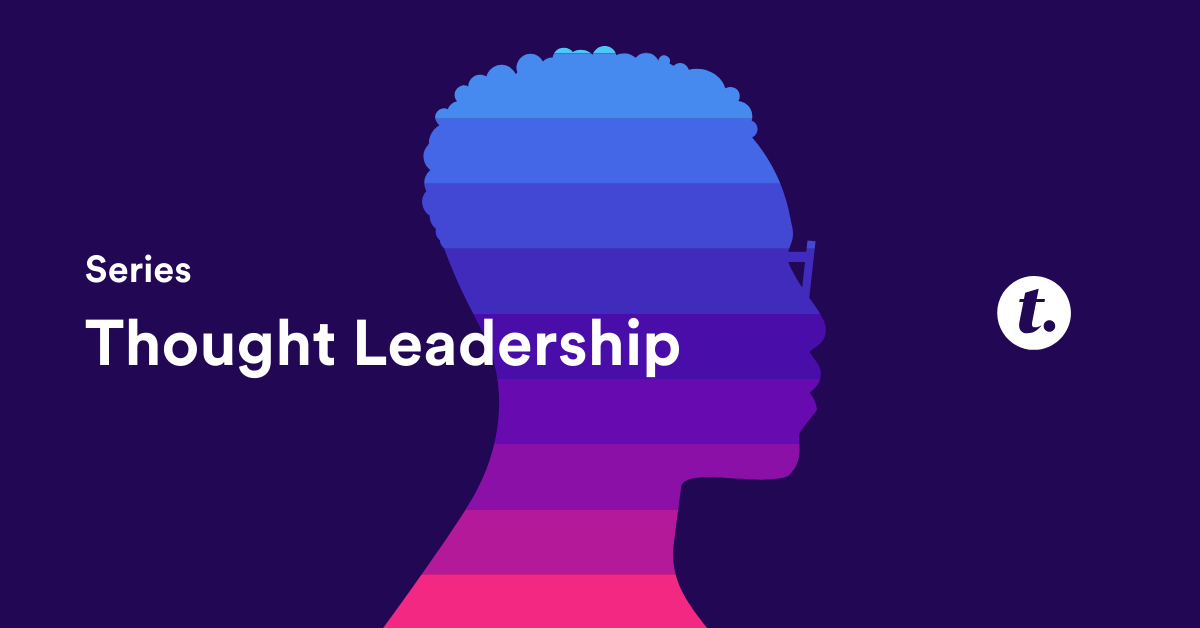
AI, the “Boost” We All Need
AI reminds me of my first e-biking experience in the German Alps in 2019.
I had never ridden an electric bike before. I remember mounting the heavy two-wheeled contraption as the concierge concernedly described the electricity-based boosting mechanism. He explained that I could pedal without any help from the electric battery, or I could select from a variety of “boost” options: pedal-assist, eco-, and turbo, each of which offered varying degrees of assistance, particularly important when biking up and down alpine mountains. Turbo provided the most boost. If you’re cycling up mountains, I highly recommend leveraging turbo-assistance as it helped me accomplish more than I ever could have on my own, kind of like AI.
AI is like e-biking. On an electric bike, you can go at average, human-powered speeds or augment your speed with various levels of boost support (AI) enabled. I suggest starting simply and slowly (like “pedal-assist”) and focusing on basic tasks where AI can augment human activity. As you embark on the journey of using AI in HR, think of yourself as the biker who can throttle back and forth as you experiment with different amounts of AI-driven “boost.”
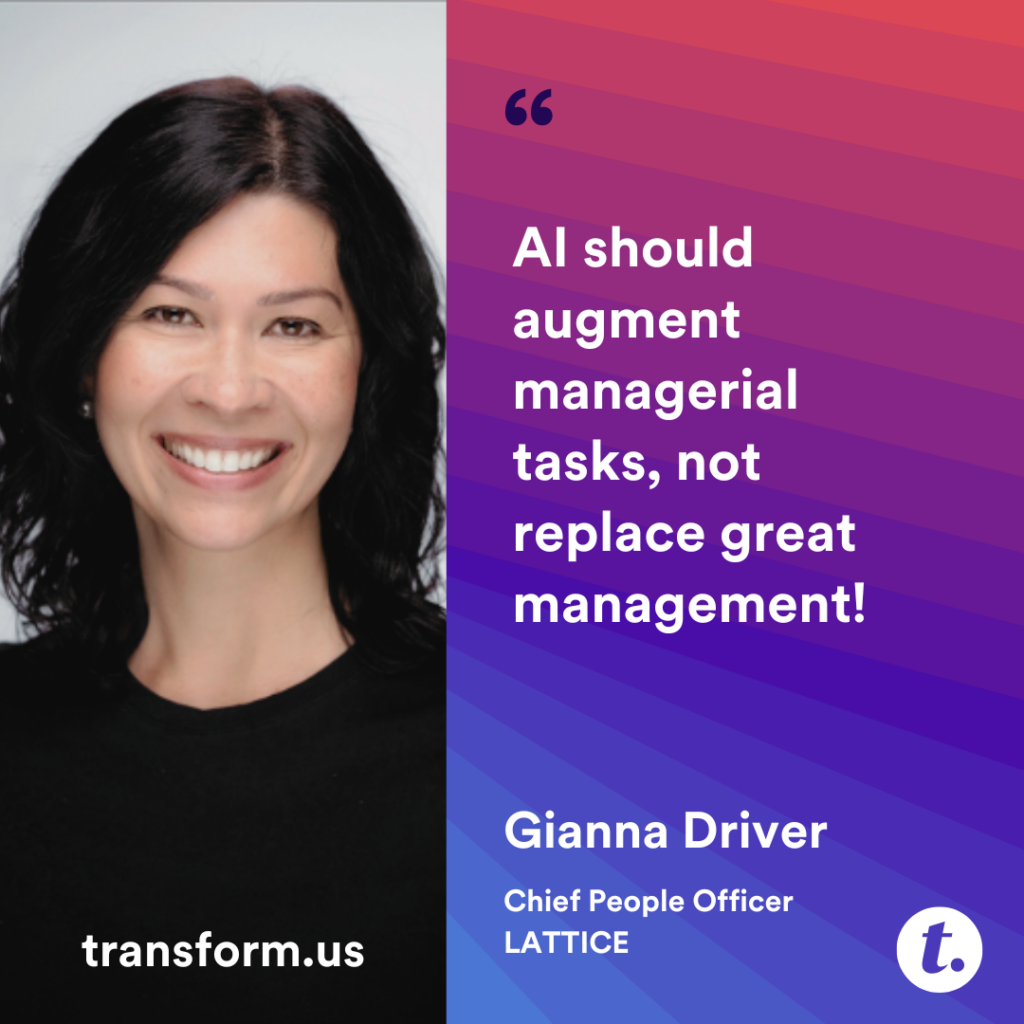
Start by Starting
Getting started is often challenging and overwhelming, especially regarding AI. It’s the buzzword swirling around so many conversations, but how do you get started using AI? How do you get others bought in and know if you’re doing it “right”?
While I don’t have all the answers, I’ve tackled some of these topics and learned insights that I hope are helpful for you.
Pre-Step Getting Started with AI: Form an AI Committee
Before getting started, I recommend gathering a small cross-functional team of folks who will create AI guidelines for your company, which we’ve also done at Lattice. Typically, this group includes representatives from Security, Legal, IT, Compliance, and HR. Their task is to define the ethical and appropriate use cases for AI in your organization. This pre-step is essential to clearly define what’s acceptable and what’s not an acceptable use of AI in your company.

First Steps with AI: Projects for Immediate Impact
Once you have the committee and clarity on acceptable AI use, it’s time to brainstorm about AI and create a framework for the projects that are good candidates for AI. Here are “low-hanging fruit” projects where AI can quickly add value. Reminder: As you delve into using AI in your workflows, remember this is an iterative process of learning, mistake-making, revising, and continually trying new things.
- Repetitive tasks: Specifically, these are projects that do not require significant creativity. AI is in the nascent stages of being able to “think,” so if you’re new to AI, I recommend starting with tasks or projects that team members find mundane and maybe even mind-numbing when done repeatedly. Examples include employee onboarding tasks, scheduling candidates for interviews, and handling employee offboarding.
- “If-Then” logic tasks: These are tasks that, if you were describing them, you’d use phrases like, “If X, then Y,” or “If this happens, then you do that.” An if-then framework is a good litmus test to ensure chronological rationale, which is great for simple AI-driven projects. Examples include if someone has a life event that might require an update to benefits elections, send the employee information about how to make changes. Another example is if an employee expresses interest in learning how to do a certain task better, like coding in another language, then recommending courses the employee could take to advance their proficiency in the coding language.
- Pattern recognition and predictive tasks: Projects where you can establish a baseline of behaviors or choices to create a pattern, and then you can leverage AI to predict future events based on historical norms. Typically, these projects aren’t 100% accurate (predicting the future never is), but in our business, the preponderance of probability is helpful! Examples include understanding a company’s working norms and helping to detect if specific employees are at risk of burning out given their working hours, PTO usage, or skipping breaks. Another example is sentiment analysis. AI can help understand baseline behavior and communication and detect when there’s been a change to the pattern, thus increasing the likelihood of disengagement or turnover.
- Anomaly-seeking tasks: When data is prolific, and we want to understand when something unexpected has happened, AI can indicate synchronicities or vulnerabilities that need additional attention. For example, if an employee has access to sensitive information and begins accessing it in unusual ways or from atypical locations, it may indicate possible data exfiltration or fraudulent activities. Another example would be AI helping to monitor company credit card transactions and expense reimbursements to notify teams if activities are occurring that are not typical for someone in that role.
- Voluminous data ingestion, including unstructured data: One of the powers of AI is the ability to quickly digest vast quantities of data that would take days, if not years, for a human to synthesize and aggregate. Once aggregated, depending on the business need, AI can help suggest solutions, rules, and/or areas to focus on. Examples include in Talent Acquisition, staying updated on the market, and competitive analysis, which is critical to hire top talent successfully. AI can ingest competitor data, industry reports, social media activity, and job market trends, then suggest strategies to attract top talent. This might include compensation trends or preferred job benefits or even help a company refine its employer brand to stand out from competitors.
- “Update” -able projects: Tasks that involve updating rules, manuals, or handbooks are great candidates for AI, mainly because numerous human hours are saved by AI reviewing the status quo, ingesting what’s changed, and making suggestions to keep information fresh and compliant. Examples include: For a global company that may operate in multiple countries and in multiple states and cities within those countries, they likely need to update their employee handbooks and operating manuals annually and as laws change in those regions. AI can quickly ingest current company materials and updates to rules and regulations, as well as suggest updates to the organization’s policies.
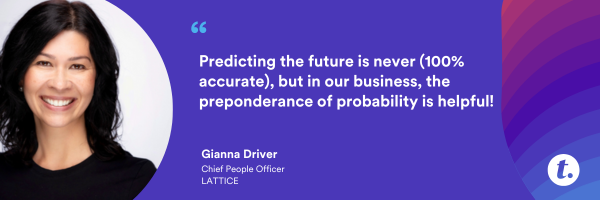
Now that we’ve reviewed a framework for characteristics that make projects great candidates for AI, let’s consider actual use cases. Specifically, given my area of experience in the HR field, we’ll focus on functions housed within the HR department.
The HR Playbook for Getting Started with AI
The umbrella of Human Resources encompasses multiple disciplines, each with its own ways to explore AI. Using the framework mentioned earlier, below are examples of how you might leverage AI to augment or boost typical workflows.
- Talent Acquisition
- Sourcing. Once you have a job description articulating the competencies and responsibilities needed for a role, AI tools can help source candidates. While not perfect, these algorithms sift through publicly available sites, like LinkedIn and others, and deliver a curated candidate pool with a high probability of containing a successful hire.
- Resume screening. Unlike sourcing, an outbound effort to find qualified candidates, resume screening AI tools can help review inbound candidate skill sets. Using predictive analytics, these tools indicate which applicants are most likely to succeed in the role. Be mindful of regulatory updates here, though, as laws are changing quickly, and in some EMEA territories, these tools are not allowed. The recent passage of the EU’s AI Act is taking effect soon and will directly impact how companies can leverage AI in the hiring process in EU countries. More information here.
- Interview scheduling. From crafting initial outreach emails to assisting with setting up actual interviews, AI can remove the time-consuming back-and-forth volley of correspondence typically required to calendar phone screens and interviews.
- “Listening” and summarizing interviews. Fantastic AI tools sit in during Zoom (or other teleconference) interviews, transcribe summaries, and even provide a first-pass assessment that assists interviewers with giving written feedback to recruiters.
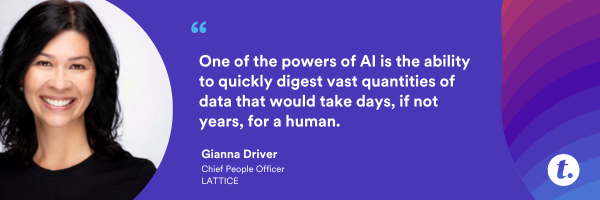
- HR Operations
- Onboarding. Once a hire has been made, a host of repeatable activities typically ensues, including sending welcome emails, setting up bank account information, gathering IT data, signing compliance-related paperwork, and a plethora of other activities that can vary by department. AI can provide efficient, timely onboarding experiences and help folks become fully ramped faster.
- Performance management. So many people mentally groan when performance review time comes around since it typically entails providing written feedback on colleagues and for managers, synthesizing that information, and writing reviews that are discussed in 1:1 conversations. AI tools can help aggregate all of this unstructured data quickly, provide insights and takeaways, and even put bullet points that managers can use to start writing reviews. Note that AI should augment managerial tasks, not replace great management!
- Engagement surveys. HRBPs often spend hours sifting through survey data after annual engagement surveys to understand feedback trends and develop an action plan for the company and the various business groups. AI can help make this process more efficient by quickly providing survey insights and trends and even creating first drafts of action plans!
- AI-powered Bots for Employee FAQs. Over time, most companies have started to amass a complex labyrinth of policies and data on intranets or internal company websites. The answers to many employee questions are found on these websites, but employees often go to HRBPs to ask. Having AI-powered bots that sit atop Slack or other instant messaging systems empowers employees to self-serve for many simple requests, like how to change addresses, where to find benefit information, etc. This can help free many hours of HRBP time to focus on more strategic tasks with business leaders.
- Learning & Development (L&D)
- Learning Paths. AI can recommend bespoke learning programs based on an employee’s skills, goals, and performance feedback for organizations with competency-based job ladders.
- Mentorship Programs. When organizations want to start creating mentorship programs, it’s often laborious to administer and determine which employees possess which skills and could benefit from them. That’s where AI can play “match-maker” and help find synergistic matches for mentors and mentees.
- Succession Planning: By ingesting unstructured data across performance evaluations, job competencies, self-reviews, and other data, AI can help identify skill gaps and boost the succession planning process.
The list of AI use cases is nearly endless, so let’s return to some basics to get started. Find tasks using the criteria at the beginning of this article to identify projects where AI can help. Next, try using AI. Learn as you go, iterate, and share with others in your organization as you have insights into what’s working with AI.
Once AI starts helping automate and augment tasks (a), you can then begin to think about processes where AI can help (b); eventually, you can get to meta-solutions where AI can be invaluable (c). Tips and tricks for (b) and (c) will be provided in a future article, so please stay tuned!
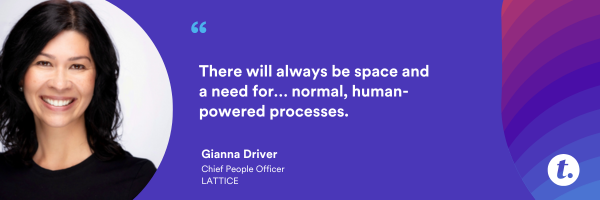
Your Turbocharged Takeaways
As stated in the beginning, AI is akin to using the “boost” feature when e-biking (in the German Alps!). As you use AI in your workflows, remember to start with small tasks and projects; start with a simple “pedal assist.” Once you’re comfortable (and it will happen quicker than you think), toggle between eco-, turbo, and pedal assist, and sometimes go back to normal, human-powered only processes because there will always be space and need for that!
A future article will focus on more advanced uses of AI in larger, more complex processes and what I call “meta-solutions.” Curious about what that means? You’ll have to keep reading!

About The Author
Gianna Driver is the Chief People Officer at Lattice. She’s been in the HR and tech industry for nearly two decades and is passionate about the intersectionality of people, productivity, and business results. Gianna is a contributing writer for the Forbes Human Resources Council and Transform and a frequent HR industry event speaker.
Join us in engaging conversations and community as we transform the now and next of work, together at Transform 2025.
